Massachusetts Institute of Technology
President Sally Kornbluth | | |
| Provost | Cynthia Barnhart | |
|---|---|---|
Academic staff | 1,069[4] | |
| Students | 11,858 (2022–23)[5] | |
| Undergraduates | 4,657 (2022–23)[5] | |
| Postgraduates | 7,201 (2022–23)[5] | |
| Location | , , United States 42°21′35″N 71°5′31″W / 42.35972°N 71.09194°W | |
| Campus | Midsize city[7], 166 acres (67.2 ha)[6] | |
| Newspaper | The Tech | |
| Colors | Cardinal red and steel gray[8] | |
| Nickname | Engineers | |
Sporting affiliations | ||
| Mascot | Tim the Beaver[9] | |
| Website | web | |
 | ||
The Massachusetts Institute of Technology (MIT) is a private land-grant research university in Cambridge, Massachusetts. Established in 1861, MIT has played a significant role in the development of many areas of modern technology and science.
Founded in response to the increasing industrialization of the United States, MIT adopted a European polytechnic university model and stressed laboratory instruction in applied science and engineering. MIT is one of three private land-grant universities in the United States, the others being Cornell University and Tuskegee University. The institute has an urban campus that extends more than a mile (1.6 km) alongside the Charles River, and encompasses a number of major off-campus facilities such as the MIT Lincoln Laboratory, the Bates Center, and the Haystack Observatory, as well as affiliated laboratories such as the Broad and Whitehead Institutes.
As of October 2023[update],
History
Foundation and vision
[...] a school of industrial science aiding the advancement, development and practical application of science in connection with arts, agriculture, manufactures, and commerce [...]
Act to Incorporate the Massachusetts Institute of Technology,
Acts of 1861, Chapter 183[18]
In 1859, a proposal was submitted to the
Rogers, a former student of the College of William and Mary and professor at the University of Virginia,[22] wanted to establish an institution to address rapid scientific and technological advances.[23][24] He did not wish to found a professional school, but a combination with elements of both professional and liberal education,[25] proposing that:
The true and only practicable object of a polytechnic school is, as I conceive, the teaching, not of the minute details and manipulations of the arts, which can be done only in the workshop, but the inculcation of those scientific principles which form the basis and explanation of them, and along with this, a full and methodical review of all their leading processes and operations in connection with physical laws.[26]
The Rogers Plan reflected the
Early developments


Two days after MIT was chartered, the
MIT was informally called "Boston Tech".
The curriculum drifted to a vocational emphasis, with less focus on theoretical science.
In 1916, the MIT administration and the MIT charter crossed the Charles River on the ceremonial barge Bucentaur built for the occasion,
Curricular reforms
In the 1930s, President
Still, as late as 1949, the Lewis Committee lamented in its report on the state of education at MIT that "the Institute is widely conceived as basically a vocational school", a "partly unjustified" perception the committee sought to change. The report comprehensively reviewed the undergraduate curriculum, recommended offering a broader education, and warned against letting engineering and government-sponsored research detract from the sciences and humanities.
Defense research

MIT's involvement in
... a special type of educational institution which can be defined as a university polarized around science, engineering, and the arts. We might call it a university limited in its objectives but unlimited in the breadth and the thoroughness with which it pursues these objectives.
—MIT president James Rhyne Killian
These activities affected MIT profoundly. A 1949 report noted the lack of "any great slackening in the pace of life at the Institute" to match the return to peacetime, remembering the "academic tranquility of the prewar years", though acknowledging the significant contributions of military research to the increased emphasis on graduate education and rapid growth of personnel and facilities.[63] The faculty doubled and the graduate student body quintupled during the terms of Karl Taylor Compton, president of MIT between 1930 and 1948; James Rhyne Killian, president from 1948 to 1957; and Julius Adams Stratton, chancellor from 1952 to 1957, whose institution-building strategies shaped the expanding university. By the 1950s, MIT no longer simply benefited the industries with which it had worked for three decades, and it had developed closer working relationships with new patrons, philanthropic foundations and the federal government.[64]
In late 1960s and early 1970s, student and faculty activists protested against the Vietnam War and MIT's defense research.[65][66] In this period MIT's various departments were researching helicopters, smart bombs and counterinsurgency techniques for the war in Vietnam as well as guidance systems for nuclear missiles.[67] The Union of Concerned Scientists was founded on March 4, 1969 during a meeting of faculty members and students seeking to shift the emphasis on military research toward environmental and social problems.[68] MIT ultimately divested itself from the Instrumentation Laboratory and moved all classified research off-campus to the MIT Lincoln Laboratory facility in 1973 in response to the protests.[69][70] The student body, faculty, and administration remained comparatively unpolarized during what was a tumultuous time for many other universities.[65] Johnson was seen to be highly successful in leading his institution to "greater strength and unity" after these times of turmoil.[71] However six MIT students were sentenced to prison terms at this time and some former student leaders, such as Michael Albert and George Katsiaficas, are still indignant about MIT's role in military research and its suppression of these protests.[72] (Richard Leacock's film, November Actions, records some of these tumultuous events.[73])
In the 1980s, there was more controversy at MIT over its involvement in SDI (space weaponry) and CBW (chemical and biological warfare) research.[74] More recently, MIT's research for the military has included work on robots, drones and 'battle suits'.[75]
Recent history
MIT has kept pace with and helped to advance the digital age. In addition to developing the predecessors to modern computing and
MIT was named a
In 2001, inspired by the
MIT has its own police force. Three days after the
In September 2017, the school announced the creation of an
The
Campus


MIT's 166-acre (67.2 ha) campus in the city of Cambridge spans approximately a mile along the north side of the Charles River basin.[6] The campus is divided roughly in half by Massachusetts Avenue, with most dormitories and student life facilities to the west and most academic buildings to the east. The bridge closest to MIT is the Harvard Bridge, which is known for being marked off in a non-standard unit of length – the smoot.[108][109]
The Kendall/MIT MBTA Red Line station is located on the northeastern edge of the campus, in Kendall Square. The Cambridge neighborhoods surrounding MIT are a mixture of high tech companies occupying both modern office and rehabilitated industrial buildings, as well as socio-economically diverse residential neighborhoods.[110][111] In early 2016, MIT presented its updated Kendall Square Initiative to the City of Cambridge, with plans for mixed-use educational, retail, residential, startup incubator, and office space in a dense high-rise transit-oriented development plan. The MIT Museum has moved immediately adjacent to a Kendall Square subway entrance, joining the List Visual Arts Center on the eastern end of the campus.[112]
Each building at MIT has a number (possibly preceded by a W, N, E, or NW) designation, and most have a name as well. Typically, academic and office buildings are referred to primarily by number while residence halls are referred to by name. The organization of building numbers roughly corresponds to the order in which the buildings were built and their location relative (north, west, and east) to the original center cluster of Maclaurin buildings.[113] Many of the buildings are connected above ground as well as through an extensive network of tunnels, providing protection from the Cambridge weather as well as a venue for roof and tunnel hacking.[114][115]
MIT's on-campus nuclear reactor[116] is one of the most powerful university-based nuclear reactors in the United States. The prominence of the reactor's containment building in a densely populated area has been controversial,[117] but MIT maintains that it is well-secured.[118] In 1999 Bill Gates donated US$20 million to MIT for the construction of a computer laboratory named the "William H. Gates Building", and designed by architect Frank Gehry. While Microsoft had previously given financial support to the institution, this was the first personal donation received from Gates.[119]
MIT Nano, also known as Building 12, is an interdisciplinary facility for nanoscale research. Its 100,000 sq ft (9,300 m2) cleanroom and research space, visible through expansive glass facades, is the largest research facility of its kind in the nation.[120] With a cost of US$400 million, it is also one of the costliest buildings on campus. The facility also provides state-of-the-art nanoimaging capabilities with vibration damped imaging and metrology suites sitting atop a 5×106 lb (2,300,000 kg) slab of concrete underground.[121]
Other notable campus facilities include a pressurized wind tunnel for testing aerodynamic research, a towing tank for testing ship and ocean structure designs, and previously Alcator C-Mod, which was the largest fusion device operated by any university.[122][123] MIT's campus-wide wireless network was completed in the fall of 2005 and consists of nearly 3,000 access points covering 9.4×106 sq ft (870,000 m2) of campus.[124]
In 2001, the Environmental Protection Agency sued MIT for violating the Clean Water Act and the Clean Air Act with regard to its hazardous waste storage and disposal procedures.[125] MIT settled the suit by paying a $155,000 fine and launching three environmental projects.[126] In connection with capital campaigns to expand the campus, the Institute has also extensively renovated existing buildings to improve their energy efficiency. MIT has also taken steps to reduce its environmental impact by running alternative fuel campus shuttles, subsidizing public transportation passes, and building a low-emission cogeneration plant that serves most of the campus electricity, heating, and cooling requirements.[127]
MIT has substantial
Architecture
Housing
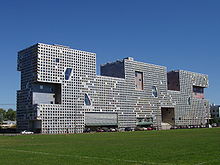
Undergraduates are guaranteed four-year housing in one of MIT's 11 undergraduate dormitories.[145] Those living on campus can receive support and mentoring from live-in graduate student tutors, resident advisors, and faculty housemasters.[146] Because housing assignments are made based on the preferences of the students themselves, diverse social atmospheres can be sustained in different living groups; for example, according to the Yale Daily News staff's The Insider's Guide to the Colleges, 2010, "The split between East Campus and West Campus is a significant characteristic of MIT. East Campus has gained a reputation as a thriving counterculture."[147] MIT also has 5 dormitories for single graduate students and 2 apartment buildings on campus for married student families.[148]
MIT has an active Greek and
In 2013–2014, MIT abruptly closed and then demolished undergrad dorm Bexley Hall, citing extensive water damage that made repairs infeasible. In 2017, MIT shut down Senior House after a century of service as an undergrad dorm. That year, MIT administrators released data showing just 60% of Senior House residents had graduated in four years. Campus-wide, the four-year graduation rate is 84% (the cumulative graduation rate is significantly higher).[154]
Organization and administration

MIT is chartered as a non-profit organization and is owned and governed by a privately appointed
MIT has five schools (
Academics
| 2022[173] | 2021[174] | 2020[175] | 2019[176] | 2018[177] | 2017[178] | |
|---|---|---|---|---|---|---|
| Applicants | 33,767 | 33,240 | 20,075 | 21,312 | 21,706 | 20,247 |
| Admits | 1,337 | 1,365 | 1,457 | 1,427 | 1,464 | 1,452 |
| Enrolls | 1,136 | 1,177 | 1,070 | 1,102 | 1,114 | 1,097 |
| Admit rate | 4.0% | 4.1% | 7.3% | 6.7% | 6.7% | 7.2% |
| Yield rate | 85.0% | 86.2% | 73.4% | 77.2% | 76.1% | 75.5% |
| SAT composite* | 1520–1570 (78%†) |
1510–1570 (70%†) |
1510–1570 (77%†) |
1510–1570 (76%†) |
1500–1570 (75%†) |
1490–1570 (72%†) |
| ACT composite* | 35–36 (32%†) |
34–36 (34%†) |
34–36 (42%†) |
34–36 (45%†) |
34–36 (48%†) |
33–35 (55%†) |
| * middle 50% range † percentage of first-time freshmen who chose to submit | ||||||
MIT is a large, highly residential, research university with a majority of enrollments in graduate and professional programs.
MIT students refer to both their majors and classes using numbers or acronyms alone.[182] Departments and their corresponding majors are numbered in the approximate order of their foundation; for example, Civil and Environmental Engineering is Course 1, while Linguistics and Philosophy is Course 24.[183] Students majoring in Electrical Engineering and Computer Science (EECS), the most popular department, collectively identify themselves as "Course 6". MIT students use a combination of the department's course number and the number assigned to the class to identify their subjects; for instance, the introductory calculus-based classical mechanics course is simply "8.01" (pronounced eight-oh-one) at MIT.[184][c]
Undergraduate program
| Academic Year | Undergraduates | Graduate | Total Enrollment |
|---|---|---|---|
| 2017–2018[178] | 4,547 | 6,919 | 11,466 |
| 2018–2019[177] | 4,602 | 6,972 | 11,574 |
| 2019–2020[176] | 4,530 | 6,990 | 11,520 |
| 2020–2021[175] | 4,361 | 6,893 | 11,254 |
| 2021–2022[174] | 4,638 | 7,296 | 11,934 |
| 2022–2023[173] | 4,657 | 7,201 | 11,858 |
The four-year, full-time undergraduate program maintains a balance between professional majors and those in the arts and sciences. In 2010, it was dubbed "most selective" by

All undergraduates are required to complete a core curriculum called the General Institute Requirements (GIRs).
Most classes rely on a combination of lectures, recitations led by associate professors or graduate students, weekly problem sets ("p-sets"), and periodic quizzes or tests. While the pace and difficulty of MIT coursework has been compared to "drinking from a fire hose",[197][198][199] the freshmen retention rate at MIT is similar to other research universities.[187] The "pass/no-record" grading system relieves some pressure for first-year undergraduates. For each class taken in the fall term, freshmen transcripts will either report only that the class was passed, or otherwise not have any record of it. In the spring term, passing grades (A, B, C) appear on the transcript while non-passing grades are again not recorded.[200] (Grading had previously been "pass/no record" all freshman year, but was amended for the Class of 2006 to prevent students from gaming the system by completing required major classes in their freshman year.[201]) Also, freshmen may choose to join alternative learning communities, such as Experimental Study Group, Concourse, or Terrascope.[200]
In 1969, Margaret MacVicar founded the Undergraduate Research Opportunities Program (UROP) to enable undergraduates to collaborate directly with faculty members and researchers. Students join or initiate research projects ("UROPs") for academic credit, pay, or on a volunteer basis through postings on the UROP website or by contacting faculty members directly.[202] A substantial majority of undergraduates participate.[203][204] Students often become published, file patent applications, and/or launch start-up companies based upon their experience in UROPs.[205][206]
In 1970, the then-Dean of Institute Relations, Benson R. Snyder, published The Hidden Curriculum, arguing that education at MIT was often slighted in favor of following a set of unwritten expectations and that graduating with good grades was more often the product of figuring out the system rather than a solid education. The successful student, according to Snyder, was the one who was able to discern which of the formal requirements were to be ignored in favor of which unstated norms. For example, organized student groups had compiled "course bibles"—collections of problem-set and examination questions and answers for later students to use as references. This sort of gamesmanship, Snyder argued, hindered development of a creative intellect and contributed to student discontent and unrest.[207][208]
Graduate program
MIT's graduate program has high coexistence with the undergraduate program, and many courses are taken by qualified students at both levels. MIT offers a comprehensive doctoral program with degrees in the humanities, social sciences, and
Admission to graduate programs is decentralized; applicants apply directly to the department or degree program. More than 90% of doctoral students are supported by fellowships, research assistantships (RAs), or teaching assistantships (TAs).[213]
MIT Bootcamps
MIT Bootcamps are intense week-long innovation and leadership programs that challenge participants to develop a venture in a week.[214] Each Bootcamp centers around a particular topic, specific to an industry, leadership skill set, or emerging technology. Cohorts are organized into small teams who work on an entrepreneurial project together, in addition to individual learning and team coaching. The program includes a series of online seminars with MIT faculty, practitioners, and industry experts, innovation workshops with bootcamp instructors focused on putting the theory participants have learned into practice, coaching sessions, and informal office hours for learners to exchange ideas freely. Bootcampers are tasked with weekly "deliverables", which are key elements of a business plan, to help guide the group through the decision-making process involved in building an enterprise. The experience culminates in a final pitch session, judged by a panel of experts.[215]
MIT Bootcamp instructors include Eric von Hippel, Sanjay Sarma, Erdin Beshimov, and Bill Aulet.[216] MIT Bootcamps were founded by Erdin Beshimov.[217][215][218]
Rankings
Forbes[220] | 4 | |
|---|---|---|
| U.S. News & World Report[221] | 2 | |
| Washington Monthly[222] | 3 | |
| WSJ / College Pulse[223] | 2 | |
| Global | ||
| ARWU[224] | 3 | |
| QS[225] | 1 | |
| THE[226] | 3 | |
| U.S. News & World Report[227] | 2 | |
MIT places among the top five in many overall rankings of universities (see table right) and rankings based on students'
Times Higher Education has recognized MIT as one of the world's "six super brands" on its World Reputation Rankings, along with Berkeley, Cambridge, Harvard, Oxford, and Stanford.[233] In 2019, it was ranked #3 among the universities around the world by SCImago Institutions Rankings.[234] In 2017, the Times Higher Education World University Rankings also rated MIT the #2 university for arts and humanities.[235][236] MIT was ranked #7 in 2015 and #6 in 2017 of the Nature Index Annual Tables, which measure the largest contributors to papers published in 82 leading journals.[237][238][239] Georgetown University researchers ranked MIT #3 in the US for 20-year return on investment.[240]
Collaborations

The university historically pioneered research and training collaborations between academia, industry and government.
The
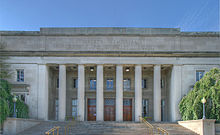

MIT's proximity
MIT maintains substantial research and faculty ties with independent research organizations in the Boston area, such as the
The mass-market magazine
MIT Microphotonics Center and PhotonDelta founded the global roadmap for integrated photonics: Integrated Photonics Systems Roadmap – International (IPSR-I). The first edition has been published in 2020. The roadmap is an amalgamation of two previously independent roadmaps: the IPSR roadmap of MIT Microphotonics Center and AIM Photonics in the United States, and the WTMF (World Technology Mapping Forum) of PhotonDelta in Europe.[266]
Libraries, collections, and museums
The MIT library system consists of five subject libraries: Barker (Engineering), Dewey (Economics), Hayden (Humanities and Science), Lewis (Music), and Rotch (Arts and Architecture). There are also various specialized libraries and archives. The libraries contain more than 2.9 million printed volumes, 2.4 million microforms, 49,000 print or electronic journal subscriptions, and 670 reference databases. The past decade has seen a trend of increased focus on digital over print resources in the libraries.[267] Notable collections include the Lewis Music Library with an emphasis on 20th and 21st-century music and electronic music,[268] the List Visual Arts Center's rotating exhibitions of contemporary art,[269] and the Compton Gallery's cross-disciplinary exhibitions.[270] MIT allocates a percentage of the budget for all new construction and renovation to commission and support its extensive public art and outdoor sculpture collection.[271][272]
The
Research
MIT was elected to the
In electronics,
Current and previous physics faculty have won eight
In the domain of humanities, arts, and social sciences, as of October 2019 MIT economists have been awarded seven
Spanning many of the above fields,
Allegations of
In 2019,
Discoveries and innovation
Natural sciences
- Oncogene – Robert Weinberg discovered genetic basis of human cancer.[314]
- Reverse transcription – David Baltimore independently isolated, in 1970 at MIT, two RNA tumor viruses: R-MLV and again RSV.[315]
- Electroweak interaction – Steven Weinberg proposed the electroweak unification theory, which gave rise to the modern formulation of the Standard Model, in 1967 at MIT.[317]
Computer and applied sciences
- Tom Leighton developed a faster content delivery network, now one of the world's largest distributed computing platforms, responsible for serving between 15 and 30 percent of all web traffic.[318]
- Cryptography – MIT researchers Ron Rivest, Adi Shamir and Leonard Adleman developed one of the first practical public-key cryptosystems, the RSA cryptosystem, and started a company, RSA Security.[319]
- Digital circuits – Claude Shannon, while a master's degree student at MIT, developed the digital circuit design theory which paved the way for modern computers.[320]
- Emacs (text editor) – development began during the 1970s at the MIT AI Lab.[322]
- MIT's Instrumentation Laboratory. That lab later made the Apollo Moon landings possible through the Apollo Guidance Computer it designed for NASA.[323]
- GNU Project – Richard Stallman formally founded the free software movement in 1983 by launching the GNU Project at MIT.[324][325][326]
- Jeff Bezanson, Stefan Karpinski, Viral B. Shah, and Alan Edelman, all at MIT at that time, and continued with the contribution of a dedicated MIT Julia Lab[327]
- Lisp (programming language) – John McCarthy invented Lisp at MIT in 1958.[328]
- Lithium-ion battery efficiencies – Yet-Ming Chiang and his group at MIT showed a substantial improvement in the performance of lithium batteries by boosting the material's conductivity by doping it[329] with aluminium, niobium and zirconium.[330][331]
- Macsyma, one of the oldest general-purpose computer algebra systems; the GPL-licensed version Maxima remains in wide use.[332]
- University of California Berkeley.[335]
- Perdix micro-drone – autonomous drone that uses artificial intelligence to swarm with many other Perdix drones.[336]
- Project MAC – groundbreaking research in operating systems, artificial intelligence, and the theory of computation. DARPA funded project.[337]
- Radiation Laboratory during World War II.[338]
- SKETCHPAD – invented by Ivan Sutherland at MIT (presented in his PhD thesis). It pioneered the way for human–computer interaction (HCI).[339] Sketchpad is considered to be the ancestor of modern computer-aided design (CAD) programs as well as a major breakthrough in the development of computer graphics in general.[340]
- VisiCalc – first spreadsheet computer program for personal computers, originally released for the Apple II by VisiCorp. MIT alumni Dan Bricklin and Bob Frankston rented time sharing at night on an MIT mainframe computer (that cost $1/hr for use).[341]
- World Wide Web Consortium – founded in 1994 by Tim Berners-Lee, (W3C) is the main international standards organization for the World Wide Web[342]
- X Window System – pioneering architecture-independent system for graphical user interfaces that has been widely used for Unix and Linux systems.[343]
Companies and entrepreneurship
MIT alumni and faculty have founded numerous companies, some of which are shown below:[344][345]
- Analog Devices, 1965, co-founders Ray Stata, (SB, SM) and Matthew Lorber (SB)
- BlackRock, 1988, co-founder Bennett Golub, (SB, SM, PhD)
- Bose Corporation, 1964, founder Amar Bose (SB, PhD)
- Buzzfeed, 2006, co-founder Jonah Peretti (SM)
- Dropbox, 2007, founders Drew Houston (SB) and Arash Ferdowsi(drop-out)
- William R. Hewlett(SM)
- HuffPost, 2005, co-founder Jonah Peretti (SM)
- Intel, 1968, co-founder Robert Noyce (PhD)
- Khan Academy, 2008, founder Salman Khan (SB, SM)[346]
- Koch Industries, 1940, founder Fred C. Koch (SB), sons William (SB, PhD), David (SB)
- Qualcomm, 1985, co-founders Irwin M. Jacobs (SM, PhD) and Andrew Viterbi (SB, SM)
- Raytheon, 1922, co-founder Vannevar Bush (DEng, Professor)
- James Simons(SB)
- Texas Instruments, 1930, founder Cecil Howard Green (SB, SM)
- TSMC, 1987, founder Morris Chang (SB, SM)
- VMware, 1998, co-founder Diane Greene (SM)
Traditions and student activities
The faculty and student body place a high value on meritocracy and on technical proficiency.[347][348] MIT has never awarded an honorary degree,[349] nor does it award athletic scholarships,[350] ad eundem degrees,[citation needed] or Latin honors[351] upon graduation. However, MIT has twice awarded honorary professorships: to Winston Churchill in 1949 and Salman Rushdie in 1993.[352]
Many
Caltech Rivalry
MIT also shares a well-known
Activities
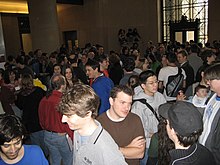
MIT has over 500 recognized student activity groups,
Fraternities and sororities provide a base of activities in addition to housing. Approximately 1,000 undergrads, 48% of men and 30% of women, participate in one of several dozen Greek Life men's, women's and co-ed chapters on the campus.[367]
The
Many MIT students also engage in "hacking", which encompasses both the
Athletics
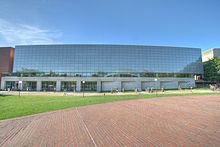
MIT sponsors 31 varsity sports and has one of the three broadest NCAA Division III athletic programs.
People
Students
| Race and ethnicity[385] | Total | ||
|---|---|---|---|
| Asian | 32% | ||
| White | 26% | ||
| Hispanic | 16% | ||
| Foreign national | 10% | ||
| Other[f] | 10% | ||
| Black | 7% | ||
| Economic diversity | |||
| Low-income[g] | 19% | ||
| Affluent[h] | 81% | ||
MIT enrolled 4,602 undergraduates and 6,972 graduate students in 2018–2019.[386] Undergraduate and graduate students came from all 50 US states as well as from 115 foreign countries.[387]
MIT received 33,240 applications for admission to the undergraduate Class of 2025: it admitted 1,365 (4.1 percent).[388] In 2019, 29,114 applications were received for graduate and advanced degree programs across all departments; 3,670 were admitted (12.6 percent) and 2,312 enrolled (63 percent).[389]
Undergraduate tuition and fees for 2019–2020 was $53,790 for nine months. 59% of students were awarded a need-based MIT scholarship. Graduate tuition and fees for 2019–2020 was also $53,790 for nine months, and summer tuition was $17,800. Financial support for graduate students are provided in large part by individual departments. They include fellowships, traineeships, teaching and research assistantships, and loans.[390] The annual increase in expenses had led to a student tradition (dating back to the 1960s) of tongue-in-cheek "tuition riots".[391]
MIT has been nominally
Faculty and staff
(picture taken in 2000)As of 2021[update], MIT had 1,069
As of October 2013[update], current faculty and teaching staff included 67
MIT faculty members have often been recruited to lead other colleges and universities. Founding faculty-member
As of 2014[update] former provost
In addition, faculty members have been recruited to lead governmental agencies; for example, former professor
As of 2017[update], MIT was the second-largest employer in the city of Cambridge.
Notable alumni
This section needs additional citations for verification. (July 2021) |
Many of MIT's over 120,000 alumni have achieved considerable success in scientific research, public service, education, and
Alumni in United States politics and public service include former
MIT alumni have led prominent institutions of higher education, including the
More than one third of the United States' crewed spaceflights have included MIT-educated astronauts, a contribution exceeding that of any university excluding the United States service academies.[417] Of the 12 people who have set foot on the Moon as of 2019[update], four graduated from MIT (among them Apollo 11 Lunar Module Pilot Buzz Aldrin). Alumnus and former faculty member Qian Xuesen led the Chinese nuclear-weapons program and became instrumental in Chinese rocket-program.[418]
MIT alumni played a significant role in the creation of the
Noted alumni in non-scientific fields include author
-
Apollo 11 astronaut Buzz Aldrin, ScD 1963 (MIT Department of Aeronautics and Astronautics)
-
Former UN Secretary-General Kofi Annan, SM 1972 (MIT Sloan School of Management)
-
SB1943 (MIT Civil and Environmental Engineering)
-
Former Federal Reserve Bank chairman and 2022 Nobel Laureate Ben Bernanke, PhD 1979 (MIT Department of Economics)
-
Economics Nobel laureate Esther Duflo, PhD 1999 (MIT Department of Economics), also an MIT professor[421]
-
Physicist and Nobel laureate Richard Feynman, SB 1939 (MIT Department of Physics)[422]
-
Astronaut and USAF Colonel Michael Fincke, SB 1989 (MIT Department of Aeronautics and Astronautics), SB 1989 (MIT Department of Earth, Atmospheric and Planetary Sciences)
-
Sculptor Daniel Chester French, Did not graduate
-
Economics Nobel laureate Paul Krugman, PhD 1977 (MIT Department of Economics)
-
Space Shuttle Challenger astronaut and physicist Ronald McNair, PhD 1976 (MIT Department of Physics)
-
Israeli Prime Minister Benjamin Netanyahu, SB 1975 (MIT Architecture), SM 1976 (MIT Sloan School of Management)
-
Architect I. M. Pei, BArch 1940 (MIT Architecture)
-
Claude Shannon, PhD 1940 (MIT Department of Electrical Engineering and Computer Science)
-
CEO of General Motors Alfred P. Sloan, SB 1895 (MIT Department of Electrical Engineering and Computer Science)
-
"Boston" guitarist Tom Scholz, SB 1969, SM 1970 (MIT Department of Mechanical Engineering)
-
Astronaut and engineer Mike Massimino, PhD 1992 (MIT Department of Mechanical Engineering)
-
Chemist and Nobel laureate Robert Burns Woodward, SB 1936, PhD 1937[423]
See also
- Massachusetts Institute of Technology School of Engineering
- Whitehead Institute
- Eli and Edythe L. Broad Institute of MIT and Harvard
- Koch Institute for Integrative Cancer Research
- The Coop, campus bookstore
Notes
- ^ The Harvard-MIT Division of Health Sciences and Technology (HST) offers joint MD, MD-PhD, or Medical Engineering degrees in collaboration with Harvard Medical School.[166]
- ^ Course numbers are sometimes presented in Roman numerals, e.g. "Course XVIII" for mathematics.[185] At least one MIT style guide now discourages this usage.[186] Also, some Course numbers have been re-assigned over time, so that the subject area of a degree may depend on the year it was awarded.[183]
- Lyndon Johnson.[248]
- ^ MIT's Building 7 and Harvard's Johnston Gate, the traditional entrances to each school, are 1.72 mi (2.77 km) apart along Massachusetts Avenue.
- ^ Other consists of Multiracial Americans & those who prefer to not say.
- ^ The percentage of students who received an income-based federal Pell Grant intended for low-income students.
- ^ The percentage of students who are a part of the American middle class at the bare minimum.
References
- ^ "Symbols: Seal". MIT Graphic Identity. MIT. Retrieved 2010-09-08.
- ^ "NAICU – Membership". Archived from the original on 2015-11-09.
- ^ As of 30 June 2023[update], "Report of the Treasurer" (PDF). MIT. Retrieved 2023-10-08.
- ^ a b c "Faculty and Staff". MIT Facts. MIT. Retrieved 2022-09-19.
- ^ a b c "Enrollment Statistics by Year". MIT Registrar's Office. Retrieved 2023-06-23.
- ^ a b "The Campus". MIT Facts 2018. Retrieved 2018-11-11.
- ^ "College Navigator – Massachusetts Institute of Technology". nces.ed.gov.
- ^ "Colors - MIT Graphic Identity". Retrieved 2016-05-25.
- ^ "History of Tim". TimBeaver100.MIT.edu. Retrieved 2020-04-14.
- ^ "How many Nobel Prize Laureates are affiliated with MIT?". MIT Admissions. Retrieved 2022-03-19.
- ^ "Notable Awards". MIT CSAIL. Retrieved 2019-10-18.
- ^ "MIT Facts 2018: Faculty and Staff". web.mit.edu. Retrieved 2019-03-07.
- ^ "Statistics". www.marshallscholarship.org. Retrieved 2019-03-08.
- ^ "NASA Chooses Three MIT Alumni to be Astronauts". alum.mit.edu. 2017-06-22. Retrieved 2019-03-07.
- ^ "MIT Facts 2018: Entrepreneurship and Innovation". web.mit.edu. Retrieved 2018-04-15.
- ^ "Entrepreneurship and Innovation at MIT (December 2015)" (PDF). MIT.
- ^ "Massachusetts Institute of Technology | Association of American Universities". www.aau.edu. Retrieved 2018-08-17.
- ^ "Charter of the MIT Corporation". Retrieved 2007-03-22.
- ^ Kneeland, Samuel (March 1859). "Committee Report: Conservatory of Art and Science" (PDF). Massachusetts House of Representatives, House No. 260. Archived from the original (PDF) on 2010-06-12. Retrieved 2008-06-07.
- ^ "MIT Timeline". MIT History. MIT Institute Archives. Archived from the original on 2013-02-19. Retrieved 2015-04-01.
- ^ "Acts and Resolves of the General Court Relating to the Massachusetts Institute of Technology" (PDF). MIT History. MIT Institute Archives. Archived from the original (PDF) on 2015-07-01. Retrieved 2012-05-29.
- ^ "Collection: William Barton Rogers papers | MIT ArchivesSpace". MIT Libraries ArchiveSpace. Retrieved 2023-01-09.
- ^ "MIT Facts 2012: Origins and Leadership". MIT Facts. MIT. Retrieved 2012-05-29.
- ^ Rogers, William (1861). "Objects and Plan of an Institute of Technology: including a Society of Arts, a Museum of Arts, and a School of Industrial Science; proposed to be established in Boston" (PDF). The Committee of Associated Institutions of Science and Arts. Archived from the original (PDF) on 2010-06-12. Retrieved 2008-06-07.
- ^ Lewis 1949, p. 8.
- ^ "Letter from William Barton Rogers to His Brother Henry". Institute Archives, MIT. 1846-03-13. Archived from the original on 2016-03-04. Retrieved 2010-10-02.
- ^ ISBN 978-0-8018-9033-8.
- ^ Angulo, A.J. "The Initial Reception of MIT, 1860s–1880s". In Geiger, Roger L. (ed.). Perspectives on the History of Higher Education. pp. 1–28.
- ^ Andrews, Elizabeth; Murphy, Nora; Rosko, Tom (2000). "William Barton Rogers: MIT's Visionary Founder". MIT. Archived from the original on 2008-05-12. Retrieved 2006-03-08.
- ISBN 0-262-19524-0.
- ^ "Morrill Act:Primary Documents of American History". Library of Congress. 2016. Retrieved 2016-02-10.
- ^ a b Prescott, Samuel C (1954). When MIT Was "Boston Tech", 1861–1916. MIT Press.
- ^ JSTOR 1880719.
- ^ "Explore campus, visit Boston, and find out if MIT fits you to a tea". 2006-12-16. Retrieved 2006-12-16.
- ^ Munroe, James P. (1923). A Life of Francis Amasa Walker. New York: Henry Holt & Company. pp. 233, 382.
- ^ Lewis 1949, p. 12.
- ^ "Alumni Petition Opposing MIT-Harvard Merger, 1904–05". Institute Archives, MIT. Archived from the original on 2010-07-22. Retrieved 2010-10-01.
- ^ a b c Alexander, Philip N. "MIT-Harvard Rivalry Timeline". MIT Music and Theater Arts News. Massachusetts Institute of Technology. Retrieved 2014-07-07.
- ^ "MIT150 Exhibition Nomination". museum.mit.edu. Archived from the original on 2016-03-05. Retrieved 2016-01-03.
- ^ "MIT Museum". webmuseum.mit.edu.
- ^ "Souvenir Program, Dedication of Cambridge Campus, 1916". Object of the Month. MIT Institute Archives & Special Collections. Archived from the original on 2012-05-10. Retrieved 2012-05-29.
- ^ Middlesex Canal (Massachusetts) map, 1852 (Map). J. B. Shields. 1852. Retrieved 2010-09-17.
- ^ "Freeman's 1912 Design for the "New Technology"". Object of the Month. MIT Institute Archives & Special Collections. Archived from the original on 2012-05-27. Retrieved 2012-05-29.
- ^ Lindsay, David (2000). "Eastman Becomes a Mystery Donor to MIT". PBS-WGBH.
- JSTOR 27757693.
- ^ a b Lewis 1949, p. 13.
- ISBN 0-19-503803-7.
- ^ a b "Member Institutions and Years of Admission". Association of American Universities. Archived from the original on 2012-10-28. Retrieved 2012-06-26.
- ^ Lewis 1949, p. 113.
- Technology Review, Monday, March 12, 2007
- ^ "History: School of Humanities, Arts, and Social Sciences". MIT Archives. Archived from the original on 2010-03-11. Retrieved 2008-07-25.
- ^ "History: Sloan School of Management". MIT Archives. Archived from the original on 2010-06-21. Retrieved 2008-07-25.
- ISBN 0-262-60044-7.
- ^ ISBN 0-684-82821-9.
- ^ a b "MIT's Rad Lab". IEEE Global History Network. Archived from the original on 2010-07-07. Retrieved 2008-07-25.
- ^ "Doc Draper & His Lab". History. The Charles Stark Draper Laboratory, Inc. Archived from the original on 2012-05-27. Retrieved 2012-05-30.
- ^ "Charles Draper: Gyroscopic Apparatus". Inventor of the Week. MIT School of Engineering. Archived from the original on 2012-04-18. Retrieved 2012-05-30.
- ^ "Project Whirlwind". Object of the Month. MIT Institute Archives & Special Collections. Archived from the original on 2012-05-30. Retrieved 2012-05-30.
- ^ "Wartime Strobe: 1939–1945 – Harold "Doc" Edgerton (Doc's Life)". Retrieved 2009-11-28.
- ^ Bedi, Joyce (May 2010). "MIT and World War II: Ingredients for a Hot Spot of Invention" (PDF). Prototype. Archived from the original (PDF) on 2012-05-24. Retrieved 2012-05-30.
- ISBN 0-231-07959-1.
- ^ Killian, James Rhyne (1949-04-02). "The Obligations and Ideals of an Institute of Technology". The Inaugural Address. Massachusetts Institute of Technology. Archived from the original on 2014-10-03. Retrieved 2013-08-10.
- ^ Lewis 1949, p. 49.
- ^ Lecuyer, 1992
- ^ a b Todd, Richard (1969-05-18). "The 'Ins' and 'Outs' at MIT". The New York Times.
- ^ "A Policy of Protest". Time. 1969-02-28. Archived from the original on 2008-12-14. Retrieved 2008-08-13.
- ^ MIT Review Panel on Special Laboratories Final Report; S.Leslie, The Cold War and American Science. The military-industrial complex at MITand Stanford; M.Albert, Remembering Tomorrow, pp. 97–99; 'MIT may be dangerous to the world', The Tech, 28/4/72, p. 5; 'Why Smash MIT?' in I. Wallerstein, University Crisis Reader, vol. 2, pp. 240–3; The Technology Review, December 1969.
- ^ "Founding Document: 1968 MIT Faculty Statement". Union of Concerned Scientists, USA. Archived from the original on 2008-01-15. Retrieved 2008-08-12.
- ^ Hechinger, Fred (1969-11-09). "Tension Over Issue of Defense Research". The New York Times.
- ^ Stevens, William (1969-05-05). "MIT Curb on Secret Projects Reflects Growing Antimilitary Feeling Among Universities' Researchers". The New York Times.
- Edward Levi, University of Chicagopresident, had comparable success guiding his institution to a position of greater strength and unity after the turmoil.
- ^ 'Battering Ram: The occupation of the president's office', The Tech, 14/12/71 p. 4 and The Tech, 4/8/72; M.Albert, Remembering Tomorrow pp. 9, 97–99; 'Michael Albert interview', 17/4/07; G.Katsiaficas, 'Review of Howard Johnson's Holding the Center Archived 2017-01-17 at the Wayback Machine; S.Shalom, 'A flawed political biography' Archived August 8, 2016, at the Wayback Machine, New Politics, Issue 23.
- ^ November Actions YouTube extract. See also: MIT Museum photos of student activism, 1960s/1970s.
- ^ The Tech, May 27, 1988, pp. 2, 11 and February 24, 1989, p. 5 and March 7, 1989, 2, 16; The Thistle, Vol. 9 No. 7; Science for the People, Vol. 20 January/February 1988, pp. 17–25, 41–2 and March/April 1988, p. 6.
- ^ MIT News, 'MIT cheetah robot lands the running jump' (2015) and 'Driving drones can be a drag' (2012); 'Department of Defense Announces Successful Micro-Drone Demonstration' (2017); MIT Technology Review, March 20, 2002.
- S2CID 30631012.
- ^ "Internet History". Computer History Museum. Retrieved 2008-08-13.
- ^ Raymond, Eric S. "A Brief History of Hackerdom". Archived from the original on 2008-10-10. Retrieved 2008-08-11.
- ^ "The Media Lab – Retrospective". MIT Media Lab. Archived from the original on 2009-04-17. Retrieved 2008-08-12.
- ^ "About W3C: History". World Wide Web Consortium. Retrieved 2008-08-11.
- ^ "MIT OpenCourseWare". MIT. Retrieved 2008-06-12.
- ^ "Mission – One Laptop Per Child". One Laptop Per Child. Archived from the original on 2008-08-13. Retrieved 2008-08-11.
- ^ "Massachusetts Space Grant Consortium". Massachusetts Space Grant Consortium. Retrieved 2008-08-26.
- ^ "MIT Sea Grant College Program". MIT Sea Grant College Program. Archived from the original on 2009-04-04. Retrieved 2008-08-26.
- ISBN 978-0-262-69294-6.
- ^ "MIT Facilities: In Development & Construction". MIT. Archived from the original on 2009-03-12. Retrieved 2008-07-22.
- ^ Bombardieri, Marcella (2006-09-14). "MIT will accelerate its building boom: $750m expansion to add 4 facilities". The Boston Globe. Retrieved 2008-08-13.
- ^ "About MITEI". MIT Energy Initiative. Retrieved 2012-05-31.
- ^ Attwood, Rebecca (2009-09-24). "Get it out in the open". Times Higher Education.
- ^ Goldberg, Carey (2001-04-04). "Auditing Classes at M.I.T., on the Web and Free". The New York Times.
- ^ Hafner, Katie (2010-04-16). "An Open Mind". The New York Times.
- ^ Guttenplan, D.D. (2010-11-01). "For Exposure, Universities Put Courses on the Web". The New York Times.
- ^ Lewin, Tamar (2011-12-19). "M.I.T. Expands Its Free Online Courses". The New York Times.
- ^ "What is edX?". MIT News Office. 2012-05-02.
- ^ "Massachusetts Institute of Technology". ROARMAP: Registry of Open Access Repository Mandates and Policies. UK: University of Southampton. 2014-12-15. Retrieved 2018-07-24.
- ^ Ruderman, Wendy; Kovaleski, Serge; Cooper, Michael (2013-04-24). "Officer's Killing Spurred Pursuit in Boston Attack". The New York Times.
- ^ Bidgood, Jess (2013-04-24). "On a Field at M.I.T., 10,000 Remember an Officer Who Was Killed". The New York Times. Retrieved 2014-01-30.
- ^ Faviero, Bruno B. F. (2013-04-26). "Thousands attend Sean Collier memorial service". The Tech. Vol. 133, no. 21. Archived from the original on 2014-02-19. Retrieved 2014-01-30.
- ^ "Thousands attend slain MIT officer's memorial service". CBS News. 2013-04-24.
- ^ "Letter regarding the establishment of the Collier Medal". MIT News. 2013-11-25. Retrieved 2013-11-26.
- ^ "Collier Medal". MIT Police. MIT. Retrieved 2013-11-26.
- ^ Rocheleau, Matt (2013-11-26). "MIT to establish a Sean Collier award". The Boston Globe. Retrieved 2013-11-26.
- ^ "IBM and MIT partner on artificial intelligence research". ABC News. Associated Press. September 7, 2017. Archived from the original on September 7, 2017. Retrieved September 7, 2017.
- ^ Gershgorn, Dave (2018-10-15). "MIT is building a billion-dollar college dedicated to AI". Quartz. Retrieved 2018-10-16.
- ^ "About LIGO". MIT. Retrieved 2020-09-08.
- ^ "Rainer Weiss – Facts". Nobel Foundation. Retrieved 2020-09-08.
- ^ "MIT physicist Rainer Weiss shares Nobel Prize in physics". MIT News. 2017-10-03. Retrieved 2020-09-08.
- Technology Review. Archived from the originalon 2012-01-11. Retrieved 2008-08-13.
- ^ Fahrenthold, David (2005-12-08). "The Measure of This Man Is in the Smoot; MIT's Human Yardstick Honored for Work". The Washington Post.
- ^ "Cambridge: Just the Facts (City Facts Brochure)". City of Cambridge. Retrieved 2012-05-31.
- ^ a b c "MIT Course Catalogue: Overview". MIT. Retrieved 2008-07-16.
- ^ "New MIT Museum Invites Exploration and Discussion". spectrum.mit.edu. MIT. Retrieved 2023-03-13.
- ^ "Building History and Numbering System". Mind and Hand Book, MIT. Archived from the original on 2010-12-22. Retrieved 2008-08-13.
- ^ "MIT Campus Subterranean Map" (PDF). MIT Department of Facilities. Archived from the original (PDF) on 2010-07-31. Retrieved 2008-08-13.
- ^ Abel, David (2000-03-30). "'Hackers' Skirt Security in Late-Night MIT Treks". The Boston Globe.
- ^ "MIT Course Catalogue". MIT. Archived from the original on 2009-01-04. Retrieved 2008-07-14.
- ^ "Loose Nukes: A Special Report". ABC News. Retrieved 2007-04-14.
- ^ "MIT Assures Community of Research Reactor Safety". MIT News Office. 2005-10-13. Retrieved 2006-10-05.
- ^ Chun, Matthew G.H. (1999-04-14). "Bill Gates Donates $20 million to MIT". The Harvard Crimson. Retrieved 2014-04-06.
- ^ "Research Capabilities | MIT.nano". mitnano.mit.edu.
- ^ Chandler, David (2018-09-23). "A big new home for the ultrasmall". MIT News.
- ^ "Supersonic Tunnel Open; Naval Laboratory for Aircraft Dedicated at M.I.T.". The New York Times. 1949-12-02.
- ^ "Ship Test Tank for M.I.T.; Dr. Killian Announces Plant to Cost $500,000". The New York Times. 1949-02-06.
- ^ "MIT maps wireless users across campus". MIT. 2005-11-04. Archived from the original on 2006-09-05. Retrieved 2007-03-03.
- ^ "Notice of Lodging of Consent Decree Pursuant to the Resource Conservation and Recovery Act, the Clean Air Act, and the Clean Water Act". Environmental Protection Agency. 2001-05-03. Archived from the original on 2008-12-25. Retrieved 2008-07-16.
- ^ Sales, Robert (2001-04-21). "MIT to create three new environmental projects as part of agreement with EPA". MIT News Office. Retrieved 2008-07-16.
- ^ "The Environment at MIT: Conservation". MIT. Archived from the original on 2009-01-04. Retrieved 2008-08-11.
- ^ a b "MIT Facts 2017: MIT and the Community". web.mit.edu. Retrieved 2017-03-24.
- ^ "Institutional Ownership Map – Cambridge Massachusetts" (PDF). Archived from the original (PDF) on 2015-10-22. Retrieved 2016-09-08.
- ^ Yadav, Sudhanshu (2022-06-22). "Discover – MITIMCo".
- ISBN 978-0-252-03321-6.
- ^ "MIT Architecture: Welcome". MIT Department of Architecture. Archived from the original on 2007-03-23. Retrieved 2007-04-04.
- ^ a b Dillon, David (2004-02-22). "Starchitecture on Campus". The Boston Globe. Retrieved 2006-10-24.
- ^ Flint, Anthony (2002-10-13). "At MIT, Going Boldly Where No Architect Has Gone Before". The Boston Globe.
- ^ ISBN 978-1-55553-619-0.
- ^ "Names of MIT Buildings". MIT Archives. Archived from the original on 2010-05-19. Retrieved 2007-04-10.
- ^ "Names on Institute Buildings Lend Inspiration to Future Scientists". The Tech. Vol. XLII, no. 70. 1922-12-22. Archived from the original on 2016-03-05. Retrieved 2012-05-30.
- ^ Campbell, Robert (1986-03-02). "Colleges: More Than Ivy-Covered Halls". The Boston Globe.
- ^ "Challenge to the Rectangle". Time Magazine. 1953-06-29. Archived from the original on 2008-12-22. Retrieved 2008-08-13.
- ^ "Flagpole in the Square". Time Magazine. 1960-08-22. Archived from the original on 2009-01-14. Retrieved 2008-08-13.
- ^ Campbell, Robert (2001-05-20). "Architecture's Brand Names Come to Town". The Boston Globe.
- ^ Paul, James (1989-04-09). "The Campuses of Cambridge, A City Unto Themselves". The Washington Post.
- ^ Lewis, Roger K. (2007-11-24). "The Hubris of a Great Artist Can Be a Gift or a Curse". The Washington Post. Retrieved 2008-08-13.
- ^ "2010 361 Best College Rankings: Quality of Life: Campus Is Tiny, Unsightly, or Both". Princeton Review. 2010. Retrieved 2010-07-06.
- ^ MIT Housing Office. "Undergraduate Residence Halls". Retrieved 2010-10-01.
- ^ "Residential Life Live-in Staff". MIT. Archived from the original on 2012-03-20. Retrieved 2012-06-01.
- ISBN 978-0-312-57029-3.
- ^ MIT Housing Office. "Graduate residences for singles & families". MIT. Archived from the original on 2010-06-20. Retrieved 2010-10-01.
- ^ "MIT Facts: Housing". 2010. Retrieved 2010-10-01.
- ^ "Common Data Set". Institutional Research, Office of the Provost, MIT. 2012.
- ^ "Undergraduate and Graduate Residence Halls, Fraternities, Sororities, and Independent Living Groups @ MIT" (PDF). MIT Residential Life. Archived from the original (PDF) on 2012-05-08. Retrieved 2012-06-01.
- ^ Zernike, Kate (1998-08-27). "MIT rules freshmen to reside on campus". The Boston Globe. p. B1.
- ^ Russell, Jenna (2002-08-25). "For First Time, MIT Assigns Freshmen to Campus Dorms". The Boston Globe.
- ^ Glatter, Hayley. "Why Residents of MIT's Counter-Culture Dorm Have to Move Out". The Atlantic. Retrieved 2017-11-07.
- ^ "MIT Corporation". MIT Corporation. Retrieved 2007-03-18.
- ^ "Members of the MIT Corporation: Term Members". The MIT Corporation. Retrieved 2010-09-07.
- ^ "Members of the MIT Corporation: Life Members". The MIT Corporation. Retrieved 2010-09-07.
- ^ "Members of the MIT Corporation: Officers". The MIT Corporation. Retrieved 2010-09-07.
- ^ "Members of the MIT Corporation: Ex Officio Members". The MIT Corporation. Retrieved 2010-09-07.
- ^ "Bylaws of the MIT Corporation – Section 2: Members". The MIT Corporation. Retrieved 2010-09-07.
- ^ MIT News Office (2020-08-20). "Diane Greene SM '78 elected chair of the MIT Corporation: Former CEO of Google Cloud succeeds Robert Millard". MIT News. MIT News Office. Retrieved 2021-06-07.
- ^ "A Brief History and Workings of the Corporation". MIT Faculty Newsletter. Retrieved 2006-11-02.
- ^ "MIT Investment Management Company". MIT Investment Management Company. Archived from the original on 2007-01-19. Retrieved 2007-01-08.
- ^ "MIT endowment totaled $16.4 billion at end of fiscal year 2018". The Tech. Retrieved 2019-11-21.
- ^ "MIT Facts: Academic Schools and Departments, Divisions & Sections". 2010. Retrieved 2010-10-01.
- ^ "Harvard-MIT HST Academics Overview". Archived from the original on 2003-01-05. Retrieved 2007-08-05.
- ^ "FAQ on the newly established MIT Stephen A. Schwarzman College of Computing". MIT News. Retrieved 2018-10-24.
- ^ Bras, Rafael L. (2004–2005). "Reports to the President, Report of the Chair of the Faculty" (PDF). MIT. Retrieved 2006-12-01.
- ^ "Reporting List". MIT. Retrieved 2010-09-07.
- ^ Bradt, Steve (2022-10-20). "Sally Kornbluth is named as MIT's 18th president".
- ^ Bradt, Steve (2012-05-16). "L. Rafael Reif selected as MIT's 17th president". MIT News.
- ^ a b "Susan Hockfield, President, Massachusetts Institute of Technology – Biography". MIT. Retrieved 2008-09-19.
- ^ a b "Common Data Set 2022-23". Massachusetts Institute of Technology. Archived from the original on 2023-09-30. Retrieved 2023-10-07.
- ^ a b "Common Data Set 2021-22". Massachusetts Institute of Technology. Archived from the original on 2023-06-01. Retrieved 2023-10-07.
- ^ a b "Common Data Set 2020-21". Massachusetts Institute of Technology. Archived from the original on 2023-09-07. Retrieved 2023-10-07.
- ^ a b "Common Data Set 2019-20". Massachusetts Institute of Technology. Archived from the original on 2023-06-01. Retrieved 2023-10-07.
- ^ a b "Common Data Set 2018-19". Massachusetts Institute of Technology. Archived from the original on 2023-08-29. Retrieved 2023-10-07.
- ^ a b "Common Data Set 2017-18". Massachusetts Institute of Technology. Archived from the original on 2023-06-01. Retrieved 2023-10-07.
- ^ a b c d "Massachusetts Institute of Technology". Carnegie Foundation for the Advancement of Teaching. Retrieved 2012-06-22.
- ^ "Massachusetts Institute of Technology". Roster of Institutions. New England Association of Schools and Colleges Commission on Institutions of Higher Education. Retrieved 2018-08-03.
- ^ "Academic Calendar". Officer of the Registrar, MIT. Retrieved 2010-09-06.
- ^ "Majors & Minors". MIT Admissions Office. Retrieved 2008-08-13.
MIT is organized into academic departments, or Courses, which you will often hear referred to by their Course number or acronym.
- ^ a b Butcher, Ev. "Course Code Designation Key". MIT Club of San Diego. Archived from the original on 2011-07-25.
- ^ "MIT Course Catalogue: Degree Programs". MIT. Retrieved 2008-07-16.
- ^ a b c d "Enrollment Statistics". MIT Office of the Registrar. Retrieved 2012-06-26.
- ^ "Style Sheet | Report Preparation Guidelines". MIT. Retrieved 2012-06-06.
- ^ a b "Average Freshmen Retention Rates: National Universities". U.S. News & World Report. Retrieved 2010-09-06.
- ^ "Admissions statistics". mitadmissions.org. Retrieved 2019-04-12.
- ^ "What is need-blind admissions?". MIT Admissions. Archived from the original on 2019-11-21. Retrieved 2019-11-25.
- ^ "MIT Course Catalog: Degree Charts". Officer of the Registrar, MIT. Retrieved 2010-09-06.
- ^ "MIT Degrees Awarded". Institutional Research, Office of the Provost. Retrieved 2012-06-26.
- ^ "MIT Course Catalog: Academic Programs". Officer of the Registrar, MIT. Retrieved 2010-09-06.
- ^ a b "MIT Course Catalog: Undergraduate General Institute Requirements". Officer of the Registrar, MIT. Retrieved 2010-09-06.
- ^ "About the Requirement". Undergraduate Communication Requirement. MIT. Retrieved 2012-05-30.
- ^ "Faculty and Instructors". Undergraduate Communication Requirement. MIT. Retrieved 2012-05-30.
- ^ Morell, Nicole (2014-12-18). "MIT's Wettest Test". Archived from the original on 2018-11-09.
- ^ "The Boston Globe". 1959-02-01. p. 51.
'Getting an education at MIT is like drinking from a fire hose' is generally attributed to former President Jerome Wiesner. However, in the 1 February 1959 (p. 51) issue of the Boston Globe, there is the following, "Quoting an MIT student Dr. [Julius] Stratton cited the quickening pace of science and said: 'Getting a technical education today is like getting a drink from a firehose.'"
- ISBN 0-252-01347-6. Retrieved 2008-08-13.
[In the sixties] Students spoke of their undergraduate experience as "drinking from a fire hose."
- ^ Mattuck, Arthur (2009). The Torch or the Firehose. MIT OpenCourseWare. p. 1.
- ^ a b "MIT Course Catalog: Freshman Year". Officer of the Registrar, MIT. Retrieved 2010-09-06.
- ^ Keuss, Nancy (2000-10-17). "The Evolution of MIT's Pass/No Record System". The Tech. Vol. 120, no. 50. Archived from the original on 2011-05-16. Retrieved 2010-09-06.
- ^ "MIT UROP: Basic Information". MIT. Retrieved 2012-06-21.
- ^ "MIT Research and Teaching Firsts". MIT News Office. Archived from the original on 2006-09-15. Retrieved 2006-10-06.
- ^ "Undergraduate Research Opportunities Program". MIT Admissions. Retrieved 2012-06-21.
- ^ Maeroff, Gene I. (1976-01-11). "Use of Undergraduates in Research Is Hailed by M.I.T.; Inventions by Students". The New York Times.
- ^ Palmer, Matthew (1999-10-05). "An MIT Original, the Oft Replicated UROP Program Reaches 30 Years". The Tech. Vol. 119, no. 47. Archived from the original on 2011-05-16. Retrieved 2009-05-08.
- ISBN 0-262-69043-8. Archived from the originalon 2006-09-22.
- Technology Review. Retrieved 2012-06-21.
- ^ "MIT Course Catalog: Graduate Education: General Degree Requirements". Officer of the Registrar, MIT. Retrieved 2010-09-06.
- ^ "Interdisciplinary Graduate Programs". Officer of the Registrar, MIT. Retrieved 2010-09-06.
- ^ "Degrees Offered". MIT Facts 2017. Massachusetts Institute of Technology. Retrieved 2017-09-13.
- ^ a b "MIT-WHOI Joint Program". Retrieved 2019-11-10.
- ^ "Graduate Education". MIT Facts 2012. MIT. Retrieved 2012-06-25.
- ^ "MIT Bootcamps". MIT Innovation Initiative. 2016-03-31.
- ^ a b "Virtual bootcamps recruit from a wider world". MIT News | Massachusetts Institute of Technology. 2021-03-03.
- ^ "MIT Bootcamps | MIT Innovation Leadership Bootcamp". bootcamps.mit.edu.
- ^ "MIT Bootcamps | MIT Innovation Leadership Bootcamp". bootcamps.mit.edu.
- ^ "Starting a Business in Boston, MA: What Makes This City Perfect for Entrepreneurs | Incfile". www.incfile.com.
- ^ "ShanghaiRanking's 2023 Academic Ranking of World Universities". Shanghai Ranking Consultancy. Retrieved 2024-02-10.
- ^ "Forbes America's Top Colleges List 2023". Forbes. Retrieved 2023-09-22.
- ^ "2023-2024 Best National Universities". U.S. News & World Report. Retrieved 2023-09-22.
- ^ "2023 National University Rankings". Washington Monthly. Retrieved 2024-02-10.
- ^ "2024 Best Colleges in the U.S." The Wall Street Journal/College Pulse. Retrieved 2024-01-27.
- ^ "ShanghaiRanking's 2023 Academic Ranking of World Universities". Shanghai Ranking Consultancy. Retrieved 2024-02-10.
- ^ "QS World University Rankings 2024: Top global universities". Quacquarelli Symonds. Retrieved 2023-06-27.
- ^ "World University Rankings 2024". Times Higher Education. Retrieved 2023-09-27.
- ^ "2022-23 Best Global Universities Rankings". U.S. News & World Report. Retrieved 2023-02-25.
- SSRN 601105.
- ^ "2012 Parchment Top Choice College Rankings: All Colleges". Parchment Inc. Retrieved 2012-06-05.
- ^ Coughlan, Sean (2014-09-15). "What makes a global top 10 university?". BBC News.
It's the third year in a row that [MIT] ... has been top of the QS World University Rankings. The biggest single factor in the QS rankings is academic reputation ... calculated by surveying more than 60,000 academics ... Universities with an established name and a strong brand are likely to do better.
- ^ "NRC Rankings". Retrieved 2008-10-09.
- ^ "MIT undergraduate engineering again ranked No. 1". MIT News Office. 2010-08-17.
- ^ Morgan, John (January 1990). "Top Six Universities Dominate THE World Reputation Rankings".
"The rankings suggest that the top six- ... Stanford University and the University of Oxford – form a group of globally recognized "super brands".
- ^ "SCImago Institutions Rankings – Higher Education – All Regions and Countries – 2019 – Overall Rank". www.scimagoir.com.
- ^ "Stanford and MIT lead THE arts and humanities ranking". Times Higher Education (THE) World University Rankings. Times Higher Education (THE). 2017-09-13. Retrieved 2018-01-26.
- ^ "MIT SHASS: MIT named No. 2 university worldwide for the Arts and Humanities". shass.mit.edu. Retrieved 2018-01-26.
- ^ "Ten institutions that dominated science in 2015". Archived from the original on 2016-04-24. Retrieved 2019-05-28.
- ^ "10 institutions that dominated science in 2017". 2018-06-12. Retrieved 2019-05-28.
- ^ "Introduction to the Nature Index". Retrieved 2019-05-28.
- ^ Center on Education and the Workforce. "Ranking 4,500 Colleges by ROI (2022)". Georgetown University.
- ^ "A Survey of New England: A Concentration of Talent". The Economist. 1987-08-08.
MIT for a long time ... stood virtually alone as a university that embraced rather than shunned industry.
- ISBN 0262631415.
The war made necessary the formation of new working coalitions ... between these technologists and government officials. These changes were especially noteworthy at MIT.
- ^ Shlaes, Amity (2008-05-14). "From the Ponderosa to the Googleplex: How Americans match money to ideas". State Department Press Release. U.S. Department of State.
Griswold, [MIT president] Compton, and various politicians handpicked Doriot to head American Research & Development, a new firm that would invest in [the] small, innovative companies that had been underserved by traditional capital markets.
- ^ Simon, Jane (1985-07-01). "Route 128: How it developed, and why it's not likely to be duplicated". New England Business. Boston. p. 15.
Compton co-founded in 1946 what is believed to be the nation's first venture capital company. ... [He] and a group led by a Harvard professor [Doriot] founded one of the first venture capital companies, American Research & Development Corp.
- ^ "Industrial Liaison Program: About Us". MIT. 2011. Archived from the original on 2015-10-16. Retrieved 2012-11-25.
Established in 1948, the ILP continues ... making industrial connections for MIT.
- ^ Kolata, Gina (1990-12-19). "MIT Deal with Japan Stirs Fear on Competition". The New York Times. Retrieved 2008-06-09.
- ^ Booth, William (1989-06-14). "MIT Criticized for Selling Research to Japanese Firms". The Washington Post.
- ^ "Nearly half of all US Presidential science advisers have had ties to the Institute". MIT News Office. 2001-05-02. Retrieved 2007-03-18.
- ^ "MIT Washington Office". MIT Washington Office. Archived from the original on 2007-02-07. Retrieved 2007-03-18.
- ^ "Hunt Intense for Federal Research Funds: Universities Station Lobbyists in Washington". 2001-02-11.
- ^ Johnston, David (1989-08-10). "Price-Fixing Inquiry at 20 Elite Colleges". The New York Times. Retrieved 2008-12-16.
- ^ Chira, Susan (1991-03-13). "23 College Won't Pool Discal Data". The New York Times. Retrieved 2008-12-16.
- ^ DePalma, Anthony (1991-05-23). "Ivy Universities Deny Price-Fixing But Agree to Avoid It in the Future". The New York Times. Retrieved 2008-12-16.
- ^ DePalma, Anthony (1992-09-02). "MIT Ruled Guilty in Anti-Trust Case". The New York Times. Retrieved 2008-07-16.
- ^ DePalma, Anthony (1992-06-26). "Price-Fixing or Charity? Trial of M.I.T. Begins". The New York Times. Retrieved 2008-08-13.
- ^ "Settlement allows cooperation on awarding financial-aid". MIT Tech Talk. 1994. Retrieved 2007-03-03.
- ^ Honan, William (1993-12-21). "MIT Suit Over Aid May Be Settled". The New York Times. Retrieved 2008-07-16.
- ^ a b c d e f "MIT Facts: Educational Partnerships". 2010. Archived from the original on 2009-01-04. Retrieved 2010-09-07.
- ^ "MIT and Imperial launch 'unparalleled' student exchange | Imperial News | Imperial College London". Imperial News. Retrieved 2018-03-21.
- ^ "MIT expands partnership with Imperial College London". MIT News. Retrieved 2018-03-21.
- ^ "Roberto Rocca Project". MIT. Retrieved 2009-11-19.
- ^ "MIT International Science and Technology Initiatives". MIT. Archived from the original on 2007-02-10. Retrieved 2007-03-17.
- Technology Review. MIT. Retrieved 2012-06-05.
- ^ "Alumni Benefits". MIT Alumni Association. Retrieved 2012-06-05.
- ^ "History – The MIT Press". MIT. Archived from the original on April 15, 2007. Retrieved March 18, 2007.
- ^ "About IPSR-I". Photonicsmanufacturing.org. Retrieved 2022-12-29.
- ^ Geraci, Diane. "Information Resources" (PDF). MIT Reports to the President 2009–2010. MIT Reference Publications Office. Retrieved 2012-06-26.
- ^ "Lewis Music Library". MIT. Archived from the original on 2010-07-07. Retrieved 2010-10-10.
- ^ "MIT List Visual Arts Center". MIT. Retrieved 2010-10-01.
- ^ "Compton Gallery". MIT Museum. Archived from the original on 2010-08-06. Retrieved 2010-10-01.
- ^ "MIT Percent-for-Art Program". MIT. Retrieved 2010-10-01.
- ^ "MIT Public Art Collection". MIT. Archived from the original on 2009-07-18. Retrieved 2010-10-01.
- ^ "MIT Museum: Mission and History". MIT. Retrieved 2013-05-15.
- ^ "Rankings by total R&D expenditures". ncsesdata.nsf.gov. National Science Foundation. Retrieved 2020-07-19.
- ^ "Research at MIT". MIT Facts. MIT. Archived from the original on 2010-08-02. Retrieved 2012-07-01.
- ^ Office of the Provost. "MIT Faculty and Staff". MIT. Retrieved 2011-04-17.
- ^ "TLO Statistics for Fiscal Year 2011". MIT. Archived from the original on 2012-05-21. Retrieved 2012-07-01.
- ^ Bishop, Matthew; Michael Green (Spring 2012). "Innovation for the Real World". Philanthropy. Retrieved 2012-06-05.
- ^ "IEEE History Center: MIT Radiation Laboratory". IEEE. Retrieved 2008-06-09.
- ^ a b "Research Laboratory of Electronics at MIT: History". MIT. Archived from the original on 2008-05-15. Retrieved 2008-06-09.
- ^ Edgerton, Harold "Doc" (2009-11-28). "High Speed Camera". Retrieved 2009-11-28.
- ^ The Edgerton Digital Collections Project "When a strobe would not do the trick in murky waters, Edgerton began working on sonar techniques to "see" with sound."
- ^ "MIT Professor Claude Shannon dies; was founder of digital communications". MIT News Office. 2001-02-27. Retrieved 2010-10-04.
- ^ Guttag, John (2003). The Electron and the Bit, Electrical Engineering and Computer Science at MIT, 1902–2002.
- ^ Office of the Provost. "A. M. Turing Award". MIT. Retrieved 2011-04-17.
- ^ Robert N. Noyce, Robert Langer, Bradford W. Parkinson, Ivan A. Getting, Butler W. Lampson, Timothy J. Berners-Lee, Rudolph Kalman
- ^ a b c d "Nobel Prize". Office of Institutional Research, MIT. Retrieved 2008-12-31.
- ^ "Dirac Medal". Office of Institutional Research, MIT. Retrieved 2008-12-31.
- ^ "Prize in Physics". Wolf Foundation. Archived from the original on 2012-02-05. Retrieved 2010-10-04.
- PMID 11237011.
- ^ "Eric S. Lander". Broad Institute. Retrieved 2008-06-09.
- ^ "Martin Deutsch, MIT physicist who discovered positronium, dies at 85". 2002-08-20. Retrieved 2008-06-12.
- ^ "Professor John C. Sheehan Dies at 76". MIT News Office. 1992-04-01. Retrieved 2008-06-12.
- ^ "Self-Reproducing Molecules Reported by MIT Researchers". MIT News Office. 1990-05-09. Archived from the original on 2008-05-16. Retrieved 2008-06-12.
- ^ "MIT Research and Teaching Firsts". MIT. Archived from the original on 2008-05-31. Retrieved 2008-06-12.
- ^ Hilts, Philip J. (1998-03-31). "Last Rites for a 'Plywood Palace' That Was a Rock of Science". The New York Times. Retrieved 2010-10-04.
- ^ Hardesty, Larry (2015-09-17). "Personalized Heart model". Retrieved 2015-09-21.
- ^ "John Bates Clark Medal". Office of Institutional Research, MIT. Retrieved 2008-12-31.
- ^ Fox, Margalit (1998-12-05). "A Changed Noam Chomsky Simplifies". The New York Times.
- ^ Jaggi, Maya (2001-01-20). "Conscience of a nation". The Guardian. London. Retrieved 2008-08-12.
- ^ Herper, Matthew (2002-01-08). "MIT Media Lab Tightens Its Belt". Forbes. Retrieved 2008-08-12.
- ^ Guernsey, Lisa (2009-04-07). "M.I.T. Media Lab at 15: Big Ideas, Big Money". The New York Times.
- ^ Matchan, Linda (2008-07-12). "In Search of A Beautiful Mind". The Boston Globe. Retrieved 2008-08-12.
- ^ Office of the Provost. "MacArthur Fellows". MIT. Retrieved 2011-04-17.
- ^ Office of the Provost. "Pulitzer Prize". MIT. Retrieved 2011-04-17.
- ^ Office of the Provost. "American Academy of Arts and Letters". MIT. Retrieved 2011-04-17.
- ^ Saltus, Richard (1990-09-28). "Journal Cites New Evidence ex-MIT Scientist Faked Data". The Boston Globe.
- ^ Boffey, Philip (1988-04-12). "Nobel Winner Is Caught Up in a Dispute Over Study". The New York Times.
- ^ Abel, David (2002-11-29). "MIT Faces Charges of Fraud, Cover-up on Missile Test Study". The Boston Globe.
- ^ Pierce, Charles P. (2005-10-23). "Going Postol". The Boston Globe. Retrieved 2008-01-27.
- ^ "Case Summary – Luk Van Parijs". Office of Research Integrity, U.S. Department of Health & Human Services. 2009-01-23. Archived from the original on 2009-06-11. Retrieved 2009-12-02.
- ^ Reich, Eugenie (2009-02-03). "Former MIT biologist penalized for falsifying data". Nature News.
- ^ Analytics, Clarivate. "Global Highly Cited Researchers 2019 list reveals top talent in the sciences and social sciences". www.prnewswire.com (Press release). Retrieved 2020-04-12.
- S2CID 12046552.
- S2CID 4222378.
- ^ Goldblith, S.A. (1993). Pioneers in Food Science, Volume 1: Samuel Cate Prescott – M.I.T. Dean and Pioneer Food Technologist. Trumball, CT: Food & Nutrition Press.
- doi:10.1103/PhysRevLett.19.1264. Archived from the original(PDF) on 2012-01-12.
- ^ "Strong dollar hurts Akamai's profit forecast, shares fall". Reuters. 2015-04-28.
- ^ Bristol, University of. "Dr Clifford Cocks CB". www.bristol.ac.uk. Retrieved 2022-04-14.
- ISBN 978-0-8090-4599-0.
- ^ "Innovators under 35". MIT Technology Review. 1999. Retrieved 2013-01-26.
- ISBN 978-0-429-82051-9.
- ISBN 978-1-56347-185-8.
- ^ "Initial Announcement – GNU Project – Free Software Foundation".
- ^ "MIT 150: The Top 50". Boston.com.
- ^ "50 Things (That MIT Made) – MIT Admissions". MIT Admissions. 2011-05-27.
- ISBN 978-3-030-70901-3.
- ^ John McCarthy. "Recursive Functions of Symbolic Expressions and Their Computation by Machine, Part I". Archived from the original on October 4, 2013. Retrieved October 13, 2006.
- S2CID 2741069.
- S2CID 248249666.
- ISBN 978-0-85709-069-0, retrieved 2022-05-04
- ^ "Tübinger Internet Multimedia Server". Archived from the original on 2009-09-30.
- ^ "Learn More About OLI". cmu.edu.
- ISBN 978-1-118-57515-4.
- ^ "Department of Defense Announces Successful Micro-Drone Demonstration". U.S. Department of Defense.
- ISBN 978-0-262-34340-4.
- ^ "MIT Radiation Laboratory | MIT Lincoln Laboratory". www.ll.mit.edu. Retrieved 2021-10-15.
- ISBN 978-1-4106-1586-2. Retrieved 2013-03-01.
- ISBN 978-1-317-65907-5.
- ^ "Boston Globe Highlights 150 MIT Ideas, Innovators". MIT Sloan Management Review. 2011-05-17.
- ^ "World Wide Web Consortium (W3C) About the Consortium". W3C. September 2009. Retrieved 2009-09-08.
- ^ Noite.pl. The X Window System: Linux Services. AL3-123 (in Polish). NOITE S.C.
- ^ "MIT Facts 2017: Entrepreneurship and Innovation". web.mit.edu. Retrieved 2017-11-18.
- ^ "17 Companies You Didn't Know Were Founded By MIT Grads". Business Insider. Retrieved 2017-11-18.
- ^ "What is the history of Khan Academy?". Khan Academy Help Center. Retrieved 2024-01-24.
- ^ Jones, Marilee. "MIT freshman application & financial aid information" (PDF). MIT Admissions Office. Archived from the original (PDF) on 2006-11-07. Retrieved 2007-01-02.
We are a meritocracy. We judge each other by our ideas, our creativity and our accomplishments, not by who our families are.
- United States.
- ^ "No honorary degrees is an MIT tradition going back to ... Thomas Jefferson". MIT News Office. 2001-06-08. Retrieved 2006-05-07.
MIT's founder, William Barton Rogers, regarded the practice of giving honorary degrees as 'literary almsgiving ... of spurious merit and noisy popularity ... '
- ^ "Does MIT provide any academic or athletic scholarships?". MIT Admissions. Retrieved 2023-02-25.
MIT provides financial aid on the basis of financial need only. We don't award money based on any measure of merit—academic, athletic, artistic, or anything else.
- ^ B., Mollie (2006-07-16). "Standing out". MIT Admissions. Retrieved 2023-02-25.
MIT doesn't rank, and nobody graduates with Latin honors or anything foofy like that.
- ^ Stevenson, Daniel C. "Rushdie Stuns Audience 26–100". The Tech. Vol. 113, no. 61. Archived from the original on 2010-07-25. Retrieved 2009-05-08.
- ^ ISBN 0-7627-3070-6.
- ^ Pourian, Jessica J. (2011-02-15). "2013's Brass Rat unveiled". The Tech. Vol. 131, no. 5. Archived from the original on 2011-10-26. Retrieved 2011-06-12.
- ^ "Ring History ('93 class webpage)". Archived from the original on 2006-12-14. Retrieved 2006-12-26.
- ^ Bauer, M.J. "IHTFP". Retrieved 2005-11-23.
- ^ "World University Rankings". Times Higher Education (THE). 2021-08-25. Retrieved 2022-02-27.
- ^ "Caltech vs MIT". Archived from the original on 2006-03-08. Retrieved 2012-07-16.
- ^ Seigel, Alex (2005-04-11). "Tales from the Snow-Covered Trenches: A Techer's Account of Card-Readers, Campus Cops, and Courage". The California Tech. p. 2. Retrieved 2014-06-11.
- ^ Wang, Hanhan (2005-04-12). "Caltech Pranks CPW; MIT Hackers Reply" (PDF). The Tech. p. 1. Retrieved 2012-09-23.
- ^ "Caltech Pranked by MIT Today". California Institute of Technology. 2006-04-06. Archived from the original on 2012-09-19. Retrieved 2012-09-23.
- ^ McNamara, John (2006-04-10). "MIT Students and Prefrosh Discover the Cannon". The California Tech. p. 1. Retrieved 2014-06-11.
- ^ Marzen, Sarah (2010-09-27). "Caltech Security Halts MIT Prank". The California Tech. p. 1. Retrieved 2014-06-11.
- ^ Lawler, Liz (2014-04-14). "Caltech Prank Club pranks MIT Campus Preview Weekend". The California Tech. p. 1. Retrieved 2014-06-11.
- ^ "Student Group List". MIT. Retrieved 2015-11-25.
- ^ "MIT Outreach Database". MIT. Archived from the original on 2011-05-11. Retrieved 2010-09-07.
- ^ Current statistics from the 2020 FSILG office annual report Archived 2020-06-21 at the Wayback Machine, accessed 22 Jun 2020.
- ^ Dowling, Claudia Glenn (2005-06-05). "MIT Nerds". Discover Magazine. Retrieved 2007-08-17.
- ^ Bridges, Mary (2005-01-23). "Her Mystery achievement: to boldly scavenge at MIT". The Boston Globe. Retrieved 2007-01-16.
- ^ "Charm School". MIT Student Activities Office. MIT Division of Student Life. Archived from the original on 2011-04-26. Retrieved 2011-07-03.
- ^ Chang, Kenneth (2001-02-06). "What, Geeks at M.I.T.? Not With This Class". The New York Times. Retrieved 2008-08-12.
- ^ Kirkpatrick, J. (2011). "Students head off to varied externships". The Tech. Vol. 131, no. 59. Archived from the original on 2015-10-16. Retrieved 2012-07-05.
- ^ Kirkpatrick, J. (2011). "Record 294 participate in MIT Externship Program". The Tech. Vol. 131, no. 57. Archived from the original on 2015-10-16. Retrieved 2012-07-05.
- ISBN 978-0-262-66137-9.
- ^ Biskup, Agnieska (2003-04-01). "These Are Not Your Ordinary College Pranks". The Boston Globe.
- ^ "Howe & Ser Moving Co". Retrieved 2007-04-04.
- ^ Bombadieri, Marcella (2003-12-18). "MIT Pranksters Wing It For Wright Celebration". The Boston Globe.
- ^ "MIT Hackers & Halo 3". The Tech. Archived from the original on 2010-04-29. Retrieved 2007-09-25.
- ^ Kathryn Krtnick, Asst. Dir. of Communications (2012-11-28). "Re: NCAA Media Inquiry" (PDF). Natl. Collegiate Athletic Assn.
List of institutions that sponsor the most sports: Bowdoin College and Williams College – 32; MIT – 31.
- ^ Dept. of Athletics (August 2012). "2012–13 Quick Facts" (PDF). MIT.
Intercollegiate Athletics: 33 varsity sports.
- ^ "CoSIDA Academic All-America All-Time Recipients". MIT. Archived from the original on 2019-03-08. Retrieved 2019-03-07.
- ^ "NCAA Elite 90 Award All-Time Recipients". MIT. Archived from the original on 2019-03-08. Retrieved 2019-03-07.
- ^ Cohen, Rachel (2010-05-18). "MIT the No. 1 jock school? You're kidding, right?". Associated Press. Archived from the original on 2011-09-12. Retrieved 2011-06-25.
- ^ Powers, John (2009-04-24). "MIT forced to cut 8 varsity sports". The Boston Globe.
- ^ "College Scorecard: Massachusetts Institute of Technology". United States Department of Education. Retrieved 2022-05-08.
- ^ "Enrollment statistics | MIT Registrar". registrar.mit.edu. Retrieved 2018-11-02.
- ^ "Geographic Distribution of Students". Office of the Registrar, MIT. 2009–2010. Retrieved 2010-10-01.
- ^ "MIT Admission Statistics". MIT Admissions. Retrieved 2020-11-18.
- ^ "MIT facts: Admission to MIT". MIT Bulletin. 144 (4). January 2019.
- ^ "Tuition and financial aid". MIT. Retrieved 2020-09-15.
- ^ Bolotin, Mark (1966-01-14). "Tuition hike provokes student riot" (PDF). The Tech. Vol. 85, no. 32. Archived from the original (PDF) on 2012-09-25. Retrieved 2010-08-26.
- ISBN 9780941901123.
- ^ "Ellen H. Swallow Richards". Science History Institute. June 2016. Retrieved 2016-11-18.
- ^ "McCormick Fact Sheet" (PDF). Archived from the original (PDF) on 2015-02-20. Retrieved 2015-02-19.
- ISBN 978-0-262-69294-6.
In 1959, 158 women were enrolled at MIT.
- ^ Stratton, J. A. (1960). The president's report 1960 (PDF). p. 49. Archived from the original (PDF) on 2016-03-04. Retrieved 2009-11-12.
Registration: In 1959–60 ... [o]ne hundred and fifty-five women were enrolled, [2.5 percent of student body]. ...
- ^ EECS Women Undergraduate Enrollment Committee (1995-01-03). "Chapter 1: Male/Female enrollment patterns in EECS at MIT and other schools". Women Undergraduate Enrollment in Electrical Engineering and Computer Science at MIT. Retrieved 2006-12-08.
- ^ MIT, Office of the Registrar. (2009-10-09). Enrollment statistics: Women students, Fall term 2009–2010.
- ^ Nobel Foundation (2009). Nobel laureates and universities. Retrieved 2015-04-01.
- ^ "Awards and Honors". Institutional Research, Office of the Provost. Retrieved 2011-10-18.
- ^ "Marcia McNutt Elected 22nd NAS President; New Treasurer, Council Members Chosen" (Press release). National Academy of Sciences. February 16, 2016. Archived from the original on February 21, 2016. Retrieved February 23, 2016.
- ^ "DUSP's Briggs joins Obama administration". MIT News Office. 2009-01-20. Archived from the original on 2013-11-06.
- ^ "Lander named to Obama's science team". MIT News Office. 2008-12-22. Archived from the original on 2013-11-06.
- ^ Calmes, Jackie; Broder, John (2013-03-04). "Obama Announces 3 Cabinet Nominations". The New York Times. Retrieved 2013-03-04.
- ^ Rampton, Roberta (2013-02-06). "Exclusive: Obama considering MIT physicist Moniz for energy secretary – sources". Chicago Tribune. Retrieved 2013-02-24.
- MIT. Archived from the originalon 1999-05-08.
- ^ "Glassdoor's Top 25 Universities To Work For". Glassdoor. Glassdoor, Inc. 2013-09-20. Retrieved 2014-03-11.
- ^ "MIT Reviews". Glassdoor. Glassdoor, Inc. Retrieved 2014-03-11.
- ^ "Rhodes Scholarships: Number of Winners by Institution, U.S. Rhodes Scholars (1904–2019)" (PDF). The Rhodes Trust. Archived from the original (PDF) on 2019-02-15.
- ^ MIT Office of Institutional Research. "Awards and Honors". Retrieved 2014-03-11.
- ^ Mongo, Julia (2020-11-24). "Meghan Davis named 2022 Mitchell Scholar". MIT News. Retrieved 2020-11-26.
- ^ "Curriculum Vitae (Lawrence H. Summers)" (PDF). Harvard University. Retrieved 2020-09-08.
- ^ "MIT Professional education Italia" (in Italian). Retrieved 2022-12-23.
- ^ Ericka Chickowski (2010-09-20). "Gurus and Grads". Entrepreneur.
- ^ "Kauffman Foundation study finds MIT alumni companies generate billions for regional economies". MIT News Office. 2009-02-17. Retrieved 2009-02-25.
- ^ Pilkington, Ed (2011-05-18). "The MIT factor: celebrating 150 years of maverick genius". The Guardian. Retrieved 2011-05-25.
- ^ "Notable Alumni". Archived from the original on 2006-11-27. Retrieved 2006-11-04.
- ^ (in Chinese) 钱学森:历尽险阻报效祖国 火箭之王淡泊名誉 Archived 2016-03-03 at the Wayback Machine,人民网,2009年10月31日.Accessed October 31, 2009; (in Chinese) 美国航空周刊2008年度人物:钱学森.网易探索(广州)(2009年10月31日. Accessed November 11, 2009.
- ISBN 0-395-65380-0.
- ^ "Study for Woolworth Building, New York". World Digital Library. 1910-12-10. Retrieved 2013-07-25.
- ^ "Curriculum Vitae (Esther Duflo)". MIT. Archived from the original on 2018-08-09. Retrieved 2020-10-13.
- ^ "Richard P. Feynman – Biographical". Nobel Foundation. Retrieved 2020-09-12.
- ^ "Robert B. Woodward – Biographical". Nobel Foundation. Retrieved 2020-10-04.
Sources
- Also see the bibliography Archived 2012-02-22 at the Wayback Machine maintained by MIT's Institute Archives & Special Collections and Written Works in MIT in popular culture.
- Abelmann, Walter H. (2004). The Harvard-MIT Division of Health Sciences and Technology: The First 25 Years, 1970–1995. Cambridge, Massachusetts: Harvard-MIT Division of Health Sciences and Technology. ISBN 9780674014589.
- Angulo, A. J. (2007). "The Initial Reception of MIT, 1860s–1880s". History of Higher Education Annual. 26: 1–28.
- Bridger, Sarah (2015). Scientists at War, The Ethics of Cold War Weapons Research. Cambridge, Massachusetts: Harvard University Press. ISBN 9780674736825.
- Etzkowitz, Henry (2006). MIT and the Rise of Entrepreneurial Science. London: Routledge. ISBN 9780415435055.
- Hapgood, Fred (1992). Up the Infinite Corridor: MIT and the Technical Imagination. Reading, Mass.: Addison-Wesley. ISBN 9780201082937.
- Jarzombek, Mark (2004). Designing MIT: Bosworth's New Tech. Boston, Mass.: Northeastern University Press. ISBN 9781555536190.
- Keyser, Samuel Jay (2011). Mens et Mania: The MIT Nobody Knows. Cambridge, Massachusetts: ISBN 9780262015943.
- Lecuyer, Christophe (1992). "The Making of a Science Based Technological University: Karl Compton, James Killian, and the Reform of MIT, 1930–1957". Historical Studies in the Physical and Biological Sciences. 23 (1): 153–180. JSTOR 27757693.
- Leslie, Stuart W. (1993). The Cold War and American Science: The Military-Industrial-Academic Complex at MIT and Stanford. New York: Columbia University Press. ISBN 9780231079587.
- Lewis, Warren K.; Robnett, Ronald H.; Soderberg, C. Richard; Stratton, Julius A.; Loofbourow, John R. (1949). Report of the Committee on Educational Survey (Lewis Report) (PDF). Cambridge, Massachusetts: MIT Press. Archived from the original (PDF) on 2012-05-07. Retrieved 2012-05-28.
- Mitchell, William J. (2007). Imagining MIT: Designing a Campus for the Twenty-first Century. Cambridge, Massachusetts: ISBN 9780262134798.
- Nelkin, Dorothy. (1972). The University and Military Research: Moral politics at MIT (science, technology and society). New York: Cornell University Press. ISBN 0-8014-0711-7.
- Peterson, T. F. (2003). Nightwork: A History of Hacks and Pranks at MIT. Cambridge, Massachusetts: ISBN 9780262661379.
- Prescott, Samuel C. (1954). When MIT was "Boston Tech", 1861–1916 (Reprint. ed.). ISBN 9780262661393.
- Postle, Denis. (1965). How to be First. BBC documentary on MIT available at reidplaza.com
- Renehan, Colm. (2007). Peace Activism at the Massachusetts Institute of Technology from 1975 to 2001: A case study, PhD thesis, Boston: Boston College.
- S2CID 145327416.
- Shrock, Robert Rakes (1982). Geology at MIT 1865–1965: A History of the First Hundred Years of Geology at Massachusetts Institute of Technology. Cambridge, Massachusetts: ISBN 9780262192118.
- Simha, O. Robert (2003). MIT Campus Planning, 1960–2000: An Annotated Chronology. Cambridge, Massachusetts: ISBN 9780262692946.
- Snyder, Benson R. (1971). The Hidden Curriculum. Cambridge, Massachusetts: ISBN 9780262690430.
- Stratton, Julius A. (2005). Mind and Hand: The Birth of MIT. Cambridge, Massachusetts: ISBN 9780262195249.
- Vest, Charles M. (2004). Pursuing the Endless Frontier: Essays on MIT and the Role of Research Universities. Cambridge, Massachusetts: ISBN 9780262220729.
- Wildes, Karl L.; Lindgren, Nilo A. (1985). A Century of Electrical Engineering and Computer Science at MIT, 1882–1982. Cambridge, Massachusetts: ISBN 9780262231190.
External links
- Official website
 Texts on Wikisource:
Texts on Wikisource:
- "Massachusetts Institute of Technology". Collier's New Encyclopedia. 1921.
- "Massachusetts Institute of Technology, The". Encyclopedia Americana. 1920.
- "Massachusetts Institute of Technology". The New Student's Reference Work. 1914.
- "New International Encyclopedia. 1905.
- Popular Science Monthly. Vol. 57.

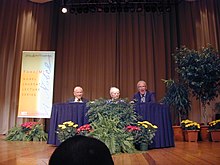


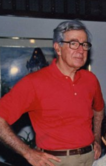
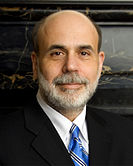
![Economics Nobel laureate Esther Duflo, PhD 1999 (MIT Department of Economics), also an MIT professor[421]](http://upload.wikimedia.org/wikipedia/commons/thumb/c/c7/Esther_Duflo_-_Pop%21Tech_2009_-_001_%28cropped%29.jpg/133px-Esther_Duflo_-_Pop%21Tech_2009_-_001_%28cropped%29.jpg)
![Physicist and Nobel laureate Richard Feynman, SB 1939 (MIT Department of Physics)[422]](http://upload.wikimedia.org/wikipedia/en/thumb/4/42/Richard_Feynman_Nobel.jpg/118px-Richard_Feynman_Nobel.jpg)
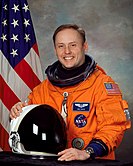
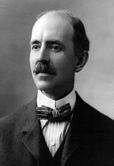
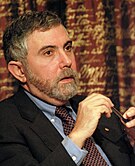
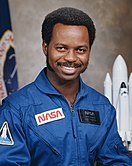
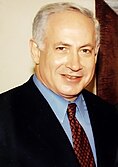




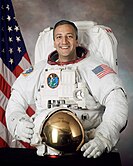
![Chemist and Nobel laureate Robert Burns Woodward, SB 1936, PhD 1937[423]](http://upload.wikimedia.org/wikipedia/en/thumb/b/bf/Robert_Woodward_Nobel.jpg/118px-Robert_Woodward_Nobel.jpg)